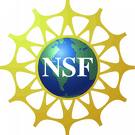Tracking and modeling inter-patch organismal movement with chemotaxis
This project is to refine and test some new models of inter-patch organismal movement, to see if they are improvements on traditional models. The new models are based on following 'attraction' gradients towards patches. These gradients are generated by a model of a diffusion process, where the diffusing substance emanates from patches, and thus the movement patterns expected are basically those of chemotaxis (although our hypothesis is that they will be reasonable approximations for visually-directed movements as well). The experimental set-up will be to use pill-bugs in an arena in the lab, with a video camera mounted overhead. The area will contain patches of soil/leaf-litter in different configurations, and pill-big movements will be tracked from the video using existing automated tracking algorithms. The individual tracks will initially be compared visually with simulated tracks that follow the diffusion gradient, but quantitative comparison will be in terms of the end-points of multiple tracks. One of the tasks of the students will be to design experimental patch configurations in which the expected relative inter-patch movement rates are very different between the new and traditional movement models, making it easier to determine which model is better. Quantitative work will be mostly computational -- running diffusion models, followed by expected track generation to generate 'source-destination' matrices -- and statistical -- comparing experimental destination distributions with those from the models. The students will have the opportunity to propose and design other kinds of experiments as they see fit.UBM students Motolani Olarinre and Xavier Lee in the laboratory of Dr Gareth Russell:

|
This Program is supported by the NSF grant award
DMS-0926232 Please contact Victor Matveev for further information. |